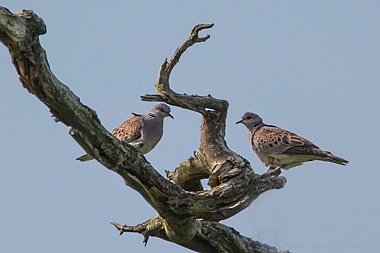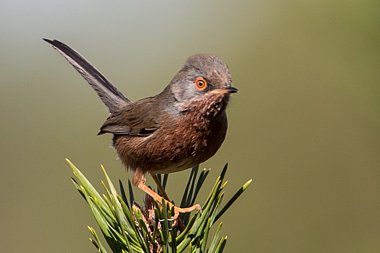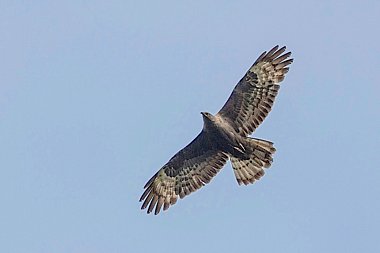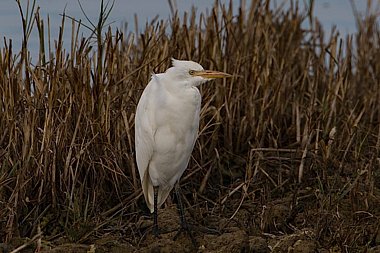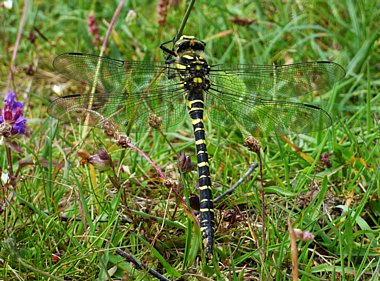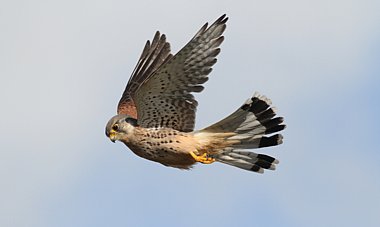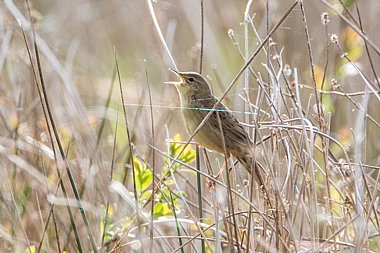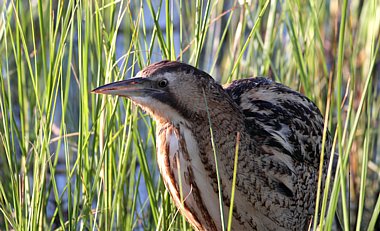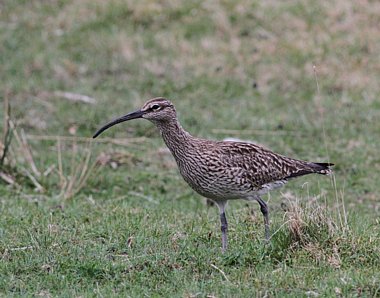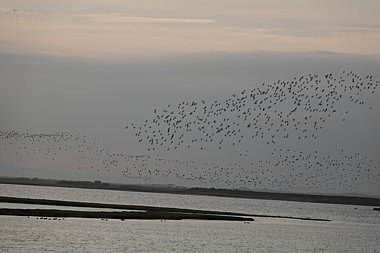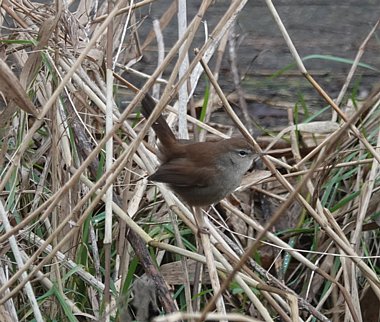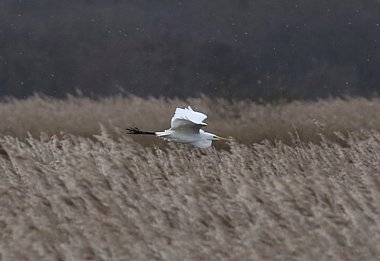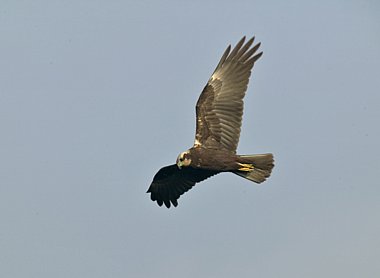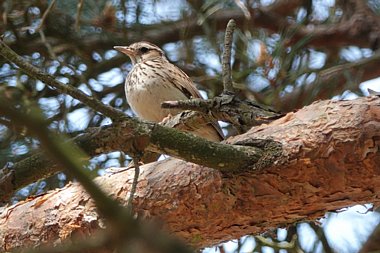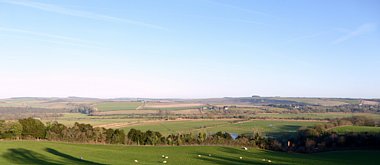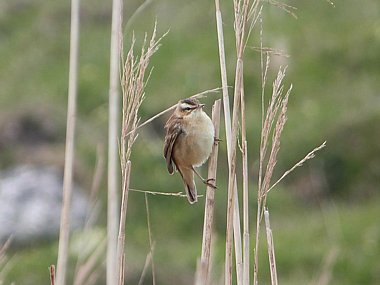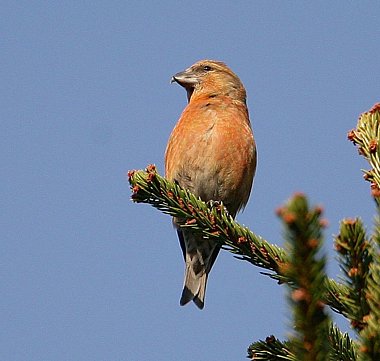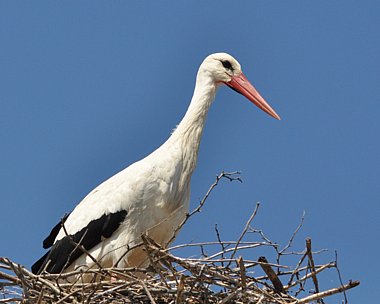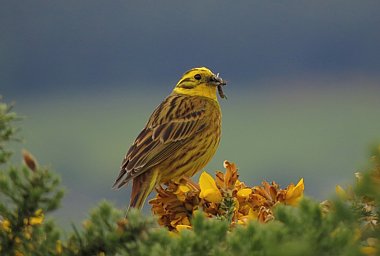Sussex, Hampshire and Kent in Spring
Breeding birds and migrants as we explore three bird-rich counties in the south east
| Destination | |
|---|---|
| Focus | |
| 2024 Dates | |
| Duration | 8 Days |
| Guides | |
| 2024 Price | £1995 pp £410 single supplement. Deposit £300 |
| Max Group Size | 12 |
An exciting holiday combining bird-rich Sussex with day visits to The New Forest in Hampshire to the west and to the Dungeness reserves on the Kent coast to the east. Split over two centres, much of our time will be spent local to our first accommodation in West Sussex where we have ample opportunity to explore nearby hotspots including Pagham, Selsey Bill, the Arun Valley and less visited West Sussex Heathlands. Two nights further east at the end of the week will bring our tour to a great climax, with exciting locations such as Rye Harbour and Dungeness on our doorstep.
Tour highlights will be frequent and varied. Sussex is one of the few remaining counties where purring Turtle Dove still occur in reasonable numbers and we should also encounter breeding White Stork as part of one of the UK's largest re-wilding projects. Birding on Heathland at dusk, we hope to encounter churring Nightjar and roding Woodcock, with calling Tawny Owl contributing to a stunning evening's birding. We visit known sites to scan for displaying Honey Buzzard, with singing Cuckoo, Tree Pipit, Woodlark and one of the best kept secret views in Sussex. Nightingale belting out their song and reeling Grasshopper Warbler are familiar sounds and an early morning visit to a wetland reserve may allow us a glimpse of both species too. Also likely are many waders in breeding plumage, the sounds and sights of breeding tern colonies alongside recent colonists such as Cattle Egret moulting into breeding plumage.
A day trip to the unique New Forest looking for its special wildlife will be another trip highlight. Here, a range of raptors including Goshawk, Hobby and shy Honey Buzzard may be possible as well as scarce Firecrest, Dartford Warbler and Hawfinch. Latter stages of the tour will be spent exploring sites in East Sussex and Kent, where Rye and Dungeness both combine good numbers of breeding birds and exciting migration. Booming Bittern may be possible, as are breeding Great Egret, Avocet, Marsh Harrier and there are good chances of rarities too. All combine for a thrilling week's birding in fantastic coastal and woodland scenery.
Day 1: Sat 18 May 2024 – Arrival and birding at Arundel
We meet at our Arundel Hotel from 2pm, and after settling into our rooms venture out into the local area for introductory birding. At ‘The Burgh’, we enjoy sweeping views from the downs south towards Arundel's famous castle with the meandering River Arun ever present. We will likely take a gentle walk on a circuit over farmland that is managed in a beneficial way for wildlife. Fields have wide margins to encourage Grey Partridge to breed, and the area is excellent for Red Kite, Buzzard and Raven with chances of a dashing Hobby or a swooping Peregrine too. In the hedgerows we should find breeding Linnet, Yellowhammer and perhaps Corn Bunting, and in some years Quail can be heard calling. We may also have time to visit Swanbourne Lake where Grey Wagtail, Cetti's, Sedge and Reed Warbler breed, as does Mandarin though the latter can be elusive. The whole surrounding area is also a good place to see Barn Owl hunting or to watch birds such as egrets or Marsh Harrier dropping into the Wetlands Centre to roost.
Day 2: Sun 19 May 2024 – Selsey and Pagham
The day will be spent around the Selsey Peninsula, where birding locations are likely to include Selsey Bill, Pagham Harbour RSPB and Medmerry Nature Reserve. Off 'the Bill' we should connect with annual migration through the English Channel, with terns and gulls likely to be among birds on the move. There is a chance of a marauding Great or Arctic Skua chasing terns offshore and if winds are from the south-east, we may see a late Pomarine Skua, Common Scoter or Great Northern Diver. After our seawatch we explore various locations at Pagham Harbour and Medmerry. In the harbour we find nesting terns including Sandwich, Common and Little and amongst the large colony there are Black headed and Mediterranean Gull breeding too. There is always a chance of finding a rare tern amongst the hordes as has been the case in recent years with Roseate, Elegant and Royal Tern all recorded! We scan the creeks and mudflats for waders, and it is not uncommon to find several species including Grey Plover, Knot, Greenshank, Spotted Redshank, Whimbrel or even a Curlew Sandpiper or Little Stint. Sidlesham Ferry at the reserve centre is always worth checking for waders such as Avocet and godwits and sometimes fluffy Tawny Owl chicks can be found in nearby trees. At North Wall we investigate the egret colony for Little and Cattle Egret – the latter now a breeding bird in Sussex with five nests in spring 2020.
After dinner on one evening we plan to visit a nearby lowland heath specifically for Nightjar and Woodcock where there is a chance for Tree Pipit or a Dartford Warbler to end the day too.
Day 3: Mon 20 May 2024 – West Sussex Heathlands
Today we visit several sites within the West Sussex Heathlands including Blackdown, home to the highest point in Sussex at 280m above sea level. With stunning views over the surrounding countryside, in this dry heath habitat on a sunny morning it is often not difficult to locate Dartford and Garden Warbler, Stonechat, Woodlark, Tree Pipit, Hobby and Cuckoo. Redstart and Wood Warbler also breed occasionally, and this area is one of the best places for breeding Common Crossbill which by late spring may be seen in roving flocks. We take time to scan the skies where top quality birds may include Goshawk, Raven and perhaps elusive Honey Buzzard. The area can also be good for dragonflies with Black-tailed Skimmer, Broad-bodied Chaser, Four-spotted Chaser and Golden-ringed Dragonfly possible. On the return journey home, we may visit a Peregrine site or search for Grey Partridge, Corn Bunting and Red Kite.
Day 4: Tue 21 May 2024 – Knepp and Pulborough
A pre-breakfast trip to a local wetland for singing Nightingale, Cetti's Warbler and elusive Grasshopper Warbler will be a good start to the day before we visit Knepp Estate. Here, the largest rewilding project in Southern England is in operation with over 3,500 acres of Wealden farmland and woods managed for nature. Currently the centre of the White Stork reintroduction programme in the UK, in 2020 three pairs nested and the estate is also providing wonderful habitat for breeding Turtle Dove, their soft purring often heard around the farmland. Nightingale are also present, as are plenty of common warblers and Spotted Flycatcher. Later in the day we visit the RSPB Reserve at Pulborough Brooks in the meandering Arun Valley. Several hides and trails offer good views of migrant waders with breeding Little Ringed Plover and sometimes Garganey among the species on view. The reserve has a good track record for rarities and overlooking the water meadows we hope to see Red Kite, Marsh Harrier and Hobby hunting.
Day 5: Wed 22 May 2024 – The New Forest
A day out to Hampshire, to the fantastic and beautiful New Forest. In this lush, verdant habitat we will be birding at the famous Acres Down, an attractive viewpoint affording commanding views over part of the Southern Forest. Sitting out on the heath, we spend some time looking for displaying raptors, and this is one of the best places in the UK to watch for shy Honey Buzzard. Goshawk are likely and with a supporting cast of Red Kite, Hobby, Peregrine and Raven there should be plenty to see as we watch the skies. On leisurely walks in the surrounding woodland and heaths, we seek out Lesser Redpoll, Hawfinch, Common Redstart, Wood Warbler, Woodlark, Tree Pipit and scarce Firecrest. The iconic New Forest Ponies should be found anywhere, grazing alongside the roadside verges as we drive past picture-postcard villages. Moving on to another part of the forest we hope to find Common Crossbill, Spotted Flycatcher, and in more open areas the haunting calls of Curlew carry and drumming Common Snipe may feature in damper meres. Dartford Warbler is another target bird, as is Woodlark which can often be found feeding in the open on sandy tracks. The vast bogs in the area also have many special plants which can be great for a variety of dragonflies, which in turn attract good numbers of hunting Hobby or sometimes even a Red-footed Falcon.
Day 6: Thur 23 May 2024 – Transfer to East Sussex and Rye
Transferring to East Sussex, our second base will be near Rye and our route there dependent upon sightings so far and up to date local bird news. We have many options, perhaps seeking Corn Bunting or to investigate ‘downland’ near the Adur valley where there is a chance of singing Quail. A walk at Newhaven Harbour may give us breeding Fulmar, Kittiwake and Rock Pipit on the undercliff, with Peregrine or Raven gliding overhead. At Pett Pools we enjoy sweeping views over the lagoons and coastal marsh beyond. and may see breeding ducks, passage waders or Marsh Harrier. Depending on the time, we might visit Rye Harbour LNR, a great site featuring a mosaic of coastal habitats including shingle, saltmarsh, saline lagoons, coastal grazing, freshwater gravel pits and reedbed. After dinner it may be possible to visit a viewpoint to look for Bittern and Barn Owl, as we enjoy a day filled with excellent and varied birding.
Day 7: Fri 24 May 2024 – Dungeness
Dungeness is a unique wilderness, the largest shingle promontory in Europe, and rugged with windswept habitats. The open, flat scenery is distinctive with many of the old fishermen's wooden huts now converted into bijou homes for artists and writers. Also here is an Atomic Power Station, the only narrow-gauge railway that runs a daily service in the world, and also the famous Bird Observatory and RSPB Reserve. An area which is rich in birdlife due to its prominent location, we have options to seawatch at the Point if conditions are favourable for birds moving up-channel or feeding offshore. The warm cooling water from the power station attracts a feeding frenzy of terns, gulls including Caspian and Yellow-legged and sometimes a passing skua. Among the shingle ridges and gorse we may find breeding Wheatear and Stonechat while on the Power Station structure it may be possible to hear singing Black Redstart. At the RSPB reserve we explore the trails and hides thoroughly with breeding terns, gulls, waders and ducks to keep us busy. We may hear a Bittern booming or a Water Rail squealing, and have a good chance of seeing Bearded Tit. Over many years, the entire area has amassed a reputation for the unexpected making for exciting birding! Rarer species such as Bee-eater and Golden Oriole occur annually, and with luck on our side we might connect with something special.
Day 8: Sat 25 May 2024 - Departure
After breakfast we say our goodbyes and return to Arundel where our tour ends.
Please note: all itineraries are given as a guide only. Actual holiday content may vary according to the judgement of your guide, and elements beyond our control (eg weather).
Expect a wide variation in weather conditions. The area can at times be wet and windy, however there could be nice dry weather. Sunshine, rain and strong winds are all possible, and you will probably experience a bit of everything. Please bring walking boots or shoes, weatherproof clothing and a small rucksack.
We take things at a slow pace, though will cover a few miles of walking daily mainly on good quality paths, but at times over rougher or uneven ground, through fields or across sandy beaches. Rare and target birds are often found in inconvenient locations, involving several gates and stiles to be climbed or potentially a long walk in exposed locations. Transfer between sites is by mini-bus.
What's included in your 'Sussex, Hampshire and Kent in Spring' holiday price:
- Seven nights comfortable en-suite hotel accommodation. Guests are never expected to share. All rooms are en-suite. Full details with your joining pack.
- Full breakfast and dinner from Saturday evening until Saturday morning, packed lunch daily.
- Guidance from a professional Group Leader.
What's not included in your 'Sussex, Hampshire and Kent in Spring' holiday price
- Travel to the meeting point in Arundel and any onward travel from where the holiday finishes.
- Insurance, drinks and other items of a personal nature.
Other birding and wildlife holidays in Southern England
- Isles of Scilly for birders
- Cornwall in Spring
- Forest of Dean and Somerset Levels
- Isles of Scilly in Spring
- West Cornwall in Autumn for birders
- West Sussex and Kent in Winter
Why choose Heatherlea for your birding and wildlife holiday?
Heatherlea is one of Britain's leading wildlife holiday operators. In 2019 we celebrate our 29th Anniversary with more choice than ever, both in Scotland and overseas. Relax and enjoy yourself, as we do all the planning! Above all, we make it our business to show key wildlife to you. Our fully inclusive guided holidays concentrate on the real experience, and we take time to ensure that each of our guests enjoys everything we do.
- We have been organising birding and wildlife holidays for 30 seasons, and have a highly experienced and capable office team. We also offer a telephone and email service outside normal office hours.
- We are a small company, run BY birders FOR birders. Come and see!
- Heatherlea are Mainland Scotland’s FIRST ‘5-Star Wildlife Experience!’ This is the highest available grading, classified as ‘exceptional’ by visitScotland.
- Heatherlea hold full Tour Operator Insurance for your added protection.
- Heatherlea is a limited company, registered in Scotland. We are also registered to pay VAT, which is included in your holiday price as quoted on this page.
- Once your holiday is confirmed in writing by us, we promise not to surcharge the price for any reason.

